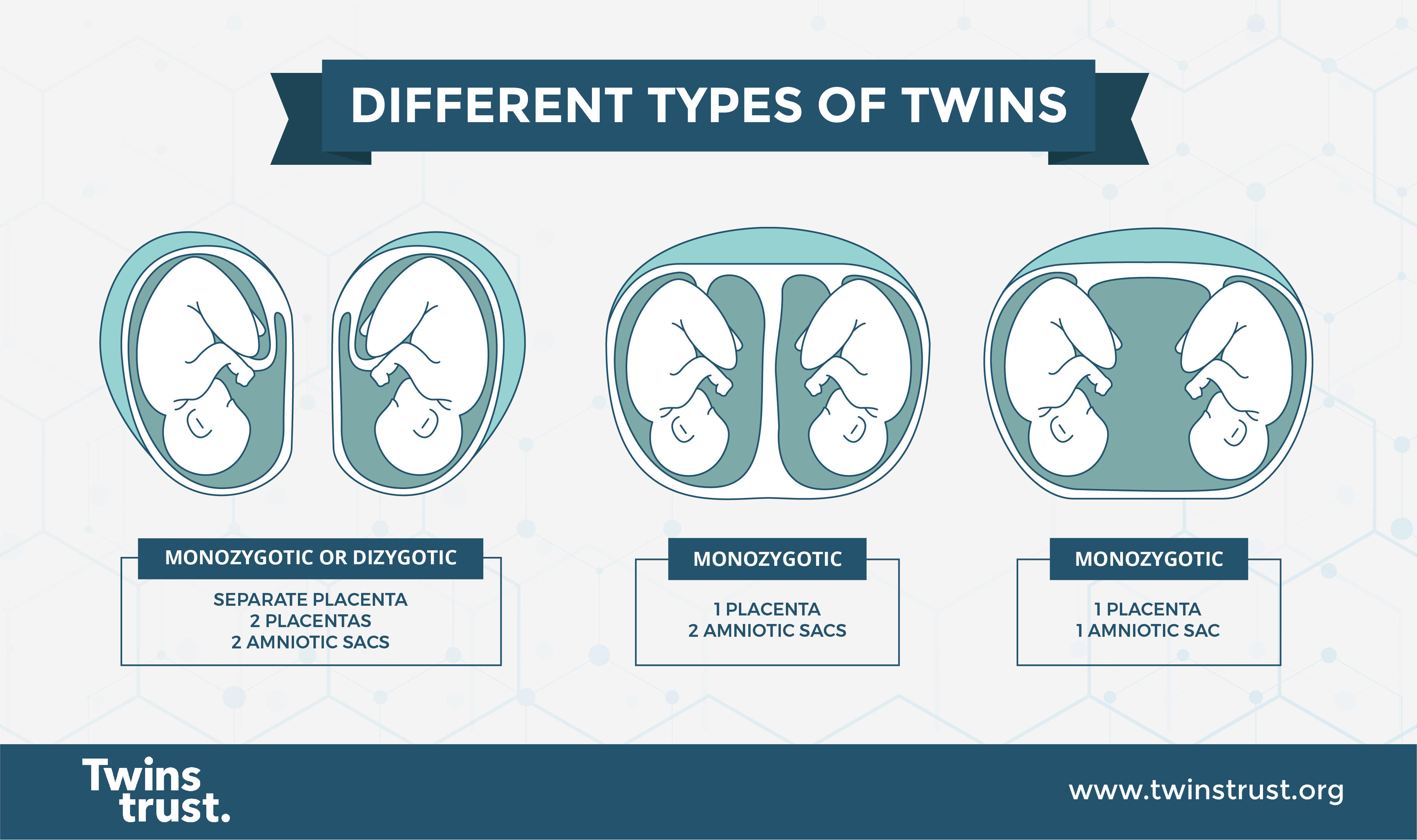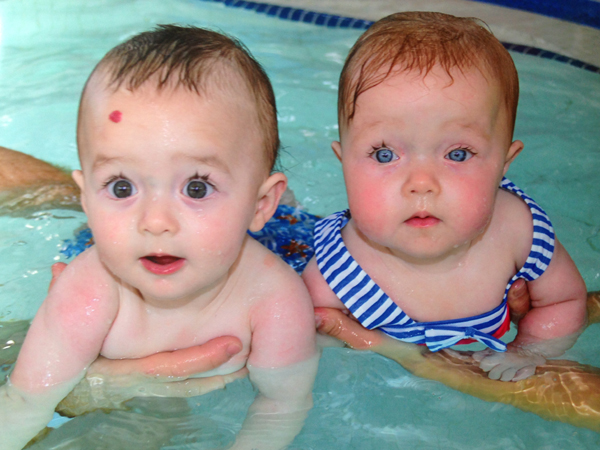The differences between identical and non-identical twins is one of the things people are most interested in when they hear about multiple births. Understanding what type of multiples you are expecting can help you prepare to welcome them into the world.
Your questions answered
On this page you'll find answers to some of the most frequently asked questions about identical and non-identical twins:
- What are the different types of twins?
- Why are some twins identical and some non-identical?
- What about triplets and higher order multiples?
- Are identical twins hereditary?
- How likely are identical and non-identical twins?
- How are identical twins different from each other?
- Can identical twins be different sexes?
- Can identical twins have the same fingerprints?
- Can non-identical twins look the same?
- How can I find out if twins are genetically identical?
What are the different types of twins?
Twins can be identical, also known as monozygotic, or non-identical, also known as dizygotic. 'Fraternal twins' is another term for non-identical twins.
Identical twins share the same genetic material and are always the same sex. They often look very similar and have many of the same physical traits because they share 100% of their genes.
Non-identical twins share about 50% of their genetic material, just like any other siblings. They can be of the same or different sexes and usually do not look more alike than any other siblings.
This diagram shows the different combinations of placentas and amniotic sacs:

Why are some twins identical and some non-identical?
Whether twins are identical or non-identical depends on how they are formed.
Identical twins occur when a single fertilized egg splits into two embryos. This is a random event that occurs during the early stages of pregnancy, usually in the first week after conception. Because they come from the same egg and sperm, they share identical genetic information.
There are three medical definitions for the way in which identical twins are formed: dichorionic diamniotic (DCDA), monochorionic diamniotic (MCDA) and monochorionic monoamniotic (MCMA).
Non-identical twins happen when a woman releases two eggs during ovulation and both eggs are fertilized by two different sperm cells. This can be influenced by genetic factors, maternal age and fertility treatments. Each twin develops from a unique combination of egg and sperm, leading to genetic differences similar to those between regular siblings.
What about triplets and higher order multiples?
Triplets and higher order multiples are formed in the same way but may be in different combinations. For example, you may have a set of triplets where two are identical and one is not.
Are identical twins hereditary?
Identical twins are not considered hereditary. The occurrence of identical twins is a random event that happens during the early stages of pregnancy. Unlike non-identical twins, where family history can play a role, having identical twins does not run in families.
How likely are identical and non-identical twins?
The rate of twin births varies around the world. In the UK about one in every 65 pregnancies results in a multiple birth and about one in every 250 pregnancies result in identical twins.
How are identical twins different from each other?
Identical twins have the same genes and sex. However, environmental factors can lead to differences in appearance, including in height and weight.
Identical twins often have different personalities, interests and preferences. These differences arise from individual experiences and environments rather than genetic factors.
Can identical twins be different sexes?
No, identical twins will always be of the same sex. They will also always share the same blood type.

Can identical twins have the same fingerprints?
Each twin will have different fingerprints. There are always some physical differences between identical twins and alongside different fingerprints each twin will also have a different bite pattern. They could also have different handedness (left or right-handed).
Can non-identical twins look the same?
Yes, non-identical twins can look the same. In the same way siblings from different births can look similar, non-identical twins can look the same due to their shared genetic material, even if they do not share 100% of their genes.
Member offer – how can I find out if twins are genetically identical?
Whether you are a twin yourself or a parent of twins, a DNA test can answer the question of whether multiple birth children are genetically identical or not.
A zygosity test is performed by collecting a sample of cheek cell DNA from each sibling, using a cheek (buccal) swab. This non-invasive method of sample collection is simple and completely pain-free, meaning that the test can be performed on a person of any age, from newborn babies to older children and adults.
Twins Trust members can save 10% when ordering a zygosity test from AlphaBiolabs or NorthGene.
Find out more about all the benefits of Twins Trust membership and sign-up today! If you are already a member, sign-in and visit the discounts page to redeem your member discount.
-strap.svg)


